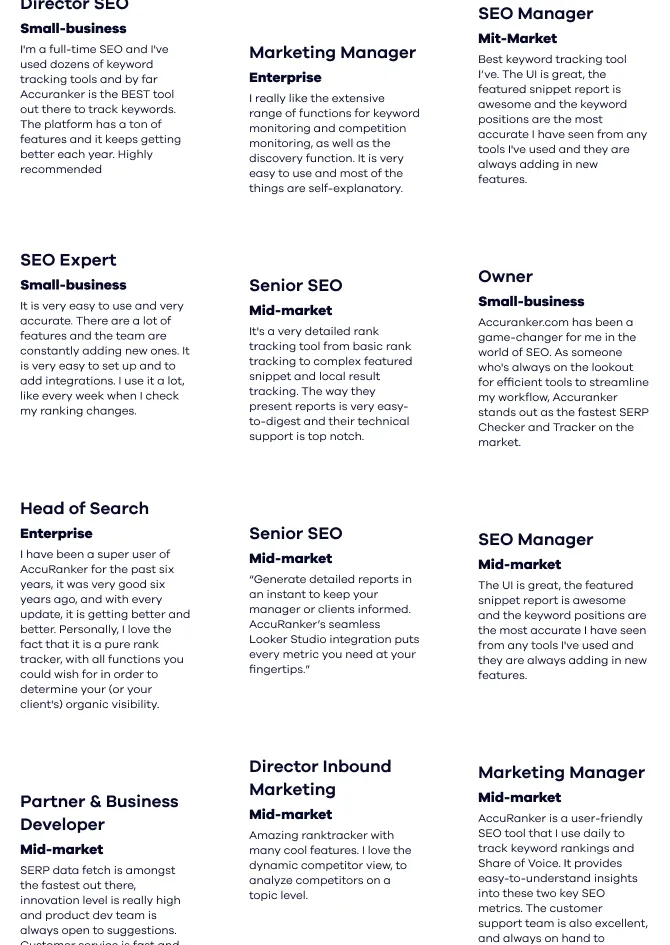
Top 10 SEO Metrics to Monitor for Better Web Ranking

Erik Emanuelli
November 17, 2023
Explore the top 10 SEO metrics essential for optimizing your website's performance and achieving better web rankings. Unlock insights into key indicators that impact search engine visibility and elevate your online presence.
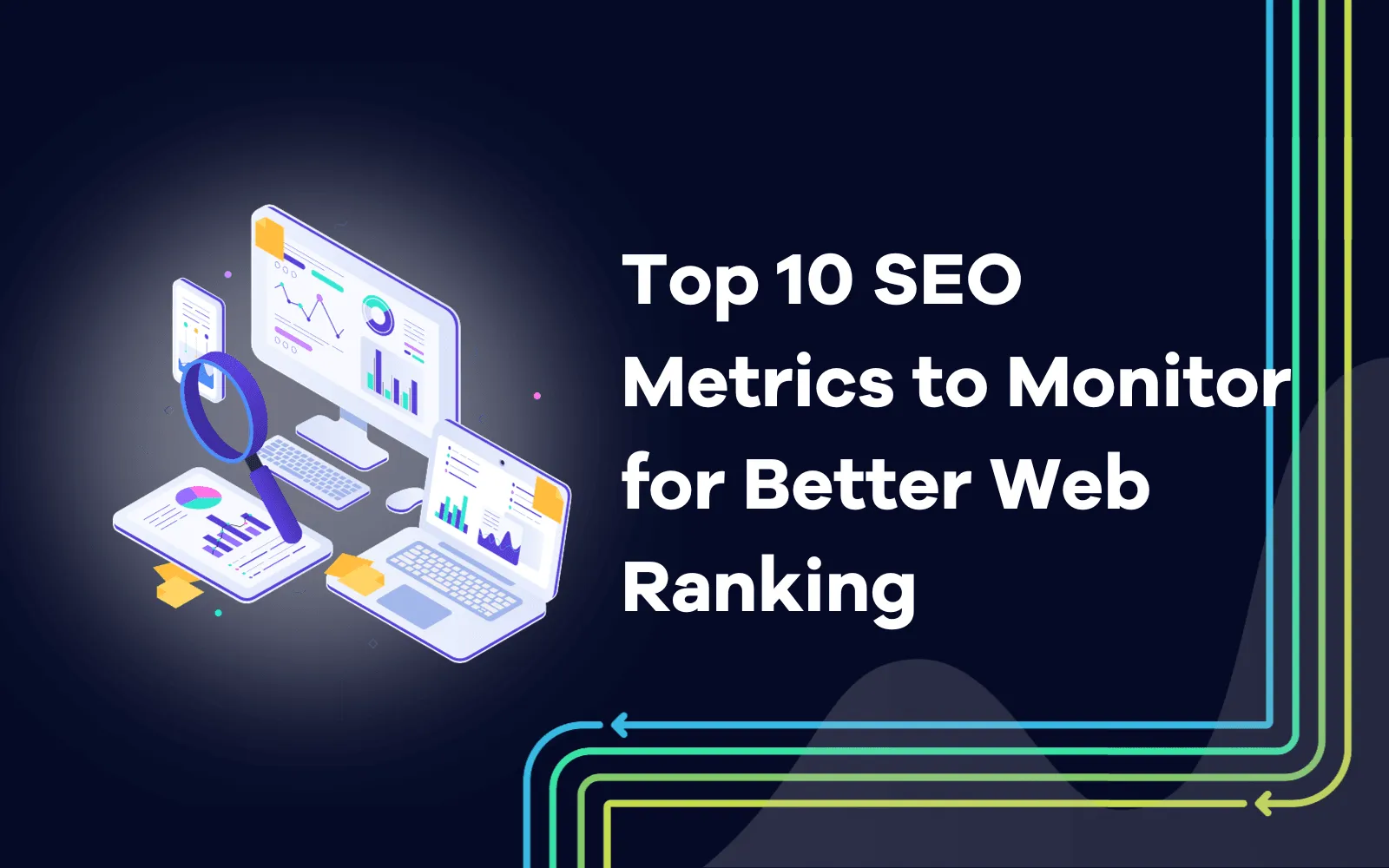
Are you looking to monitor the progress of your website's search engine optimization efforts?
Then you need to keep an eye on the right SEO metrics.
These are the key performance indicators that will help you track and measure the success of your website in terms of search engine ranking, visibility, and user engagement.
Are you ready to dive in?
Let's take a look at the top ten SEO metrics you should be monitoring for better web ranking.
What Are SEO Metrics?
SEO metrics are numerical values or data points that measure the performance of a website in terms of search engine optimization.
These KPIs provide valuable insights into how well a website is performing in terms of ranking on search engines, attracting organic traffic, and engaging users.
There are different metrics that can be monitored, but not all are equally important for every website. It is crucial to choose the right ones that align with your website's goals and objectives.
Why Are SEO Metrics Important?
SEO metrics are crucial for the success of any website. They help to track progress, identify areas for improvement, and make data-driven decisions. By monitoring and analyzing them, website owners and digital marketers can determine the effectiveness of their online strategies and make necessary adjustments.
Moreover, they provide valuable information on how users interact with a website. This data can help in identifying user behavior patterns, preferences, and needs, which can then be used to improve the overall user experience.
In particular, they can help you:
Find Growth Opportunities
Spot Errors and Issues
Measure the Impact of SEO Efforts
Understand User Behavior
Find Growth Opportunities
By analyzing these KPIs, you can identify areas where your website is performing well and areas where there is room for improvement.
For example, if you have a page about the best futures prop trading firms that have a high click-through rate (CTR) but a low conversion rate, it may indicate that your content is attracting users, but something on the content is preventing them from taking the desired action. By addressing this issue, you can potentially increase your conversion rate and drive more sales or leads.
Similarly, if your website has a high bounce rate, it may indicate that users are not finding what they need on your website. By improving the user experience and providing relevant content, you can decrease your bounce rate and keep visitors engaged for longer periods.
Spot Errors and Issues
Analyzing the right metrics can also help you identify technical errors and issues that may be affecting your website's performance.
For example, a sudden drop in rankings could indicate that your website has been hit by a Google algorithm update or that there is an issue with your site's architecture. By keeping track of data such as keyword rankings, organic traffic, and backlinks, you can quickly detect any issues and take corrective actions.
This can help prevent significant drops in traffic and rankings, ultimately saving you time and resources.
Measure the Impact of SEO Efforts
By monitoring changes in these metrics over time, you can determine whether your strategies are working or not.
For example, if your organic traffic and rankings have increased since implementing a new SEO strategy, it is a good indication that your efforts are paying off.
Conversely, if there has been no improvement or even a decline in metrics, it may indicate that you need to reevaluate your strategies and make necessary changes.
Understand User Behavior
SEO metrics can also provide valuable insights into how users behave on your website.
For instance, by analyzing metrics like time on page, pages per session, and bounce rate, you can understand how engaged visitors are with your content and whether they are finding what they need.
This data can help you identify areas where users may be dropping off or getting stuck, allowing you to address these issues and improve the overall user experience. By understanding user behavior, you can make informed decisions that align with the needs and preferences of your target audience.
10 SEO Metrics to Monitor for Better Web Ranking
Now, let's take a look at ten key performance indicators you should be monitoring to improve your website's search engine ranking and visibility:
Organic Clicks
Referring Domains
Click-through rate (CTR)
Keyword Rankings
Domain Authority
Core Web Vitals
On-Page Optimization Score
Crawl Errors
Page Loading Time
Indexed Pages
#1. Organic Clicks
Organic clicks refer to the number of clicks a website receives from organic search results. This metric is important because it shows how effective your SEO efforts are in driving traffic to your website.
You can find this data in Google Search Console, under the "Performance" tab:
This is probably the most important metric to track as it directly relates to the success of your SEO efforts and overall website performance.
#2. Referring Domains
Referring domains are external websites that link back to your website. The more high-quality referring domains you have, the better it is for your website's search engine ranking.
Search engines see these links as votes of confidence in your website's credibility and authority. Therefore, monitoring the number of referring domains can give you an idea of your website's link profile and identify potential link-building opportunities.
You can find this number in tools like SEMrush or Ahrefs.
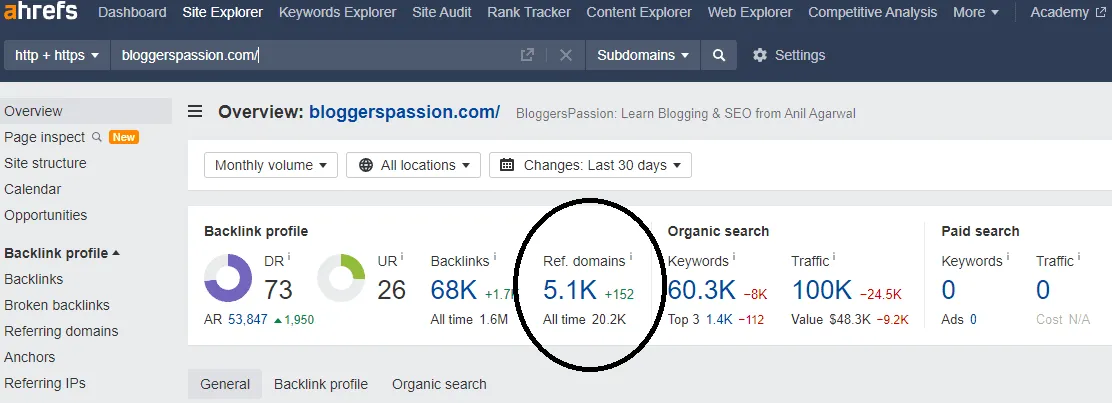
#3. Click-through rate (CTR)
Click-through rate (CTR) refers to the number of clicks your website receives divided by the number of impressions it gets in search results.
A high CTR indicates that your website is attracting users' attention and compelling them to click through to your site. This can positively impact your website's search engine ranking.
You can track your CTR in Google Search Console, under the "Performance" tab.
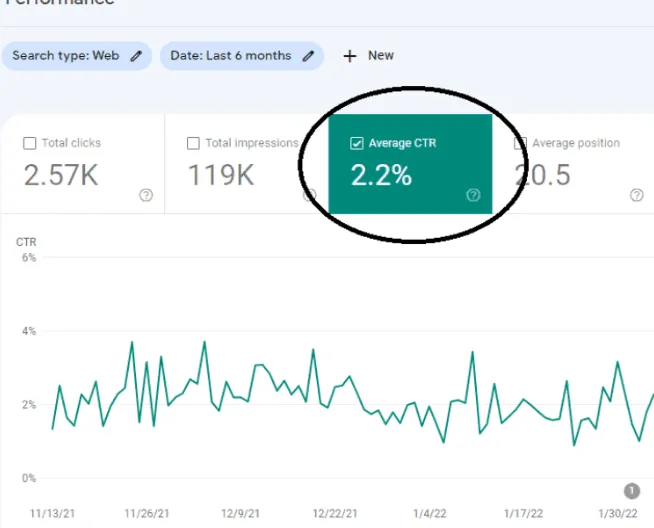
#4. Keyword Rankings
Keyword rankings show where your website ranks for specific search terms.
Monitoring this metric can help you understand the effectiveness of your SEO strategies (such as content creation) and identify opportunities to improve.
You can track your keyword rankings using tools like SEMrush or Ahrefs.
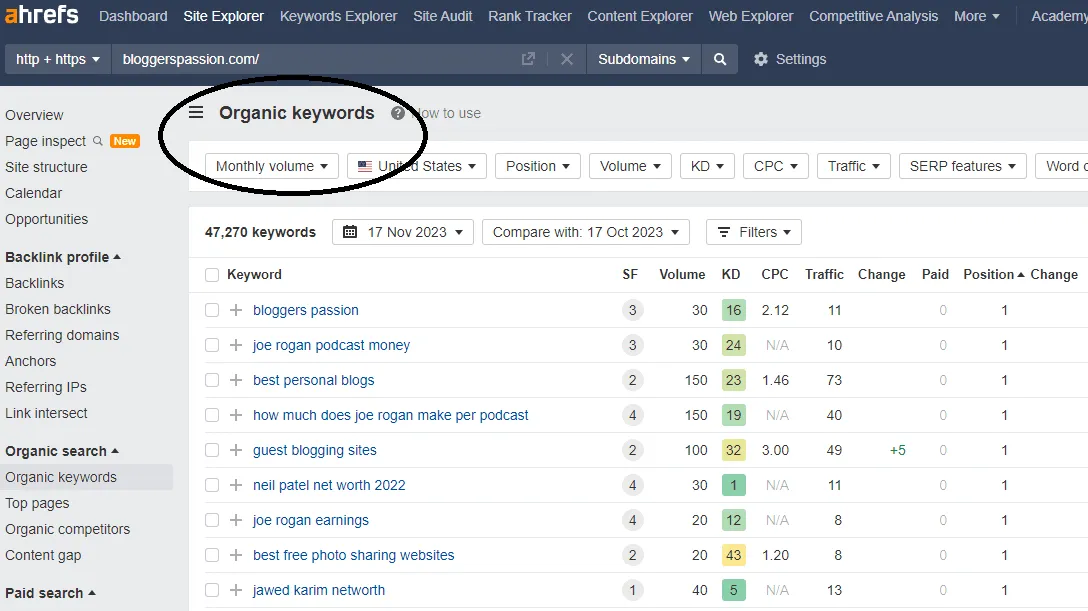
#5. Domain Authority
Domain authority is a score developed by Moz that predicts how well a website will rank on search engine result pages.
A higher domain authority indicates that your website has quality content, good backlinks, and is well-optimized for search engines.
You can check your website's domain authority using tools like Moz Link Explorer.
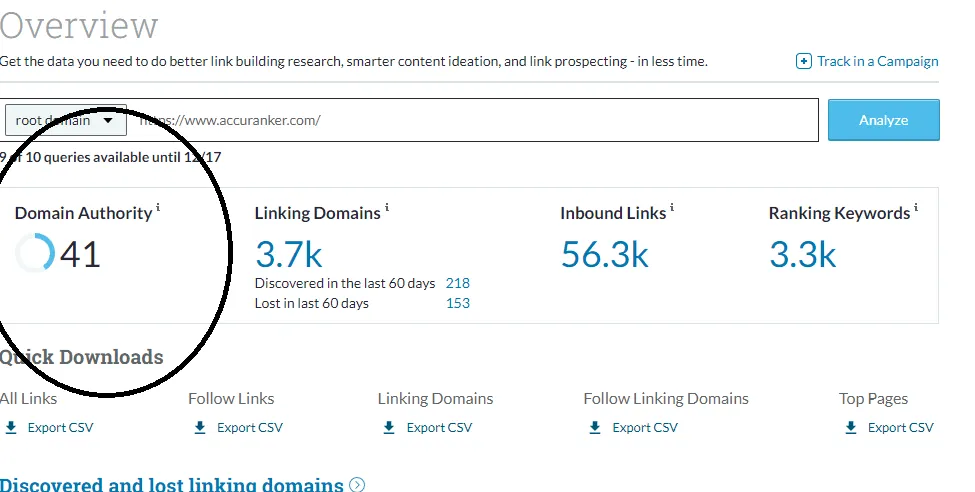
#6. Core Web Vitals
Core Web Vitals are a set of metrics that measure the loading speed, interactivity, and visual stability of a website.
These metrics have become a ranking factor for Google in 2021, making it crucial to monitor and improve.
You can use tools like PageSpeed Insights or Google Search Console's Core Web Vitals report to track these metrics.
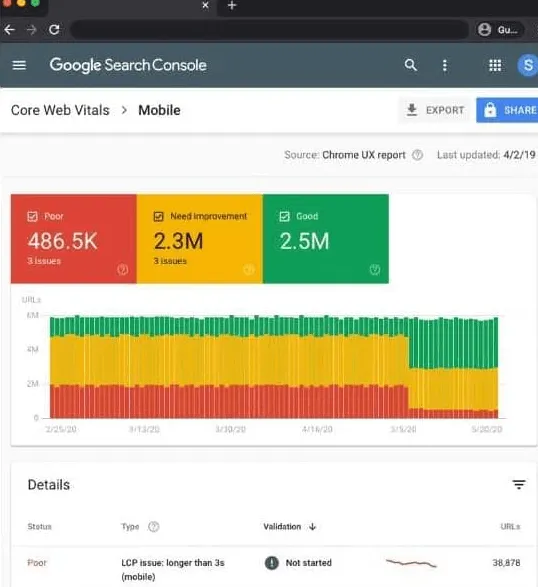
#7. On-Page Optimization Score
On-page optimization refers to optimizing individual web pages to rank higher and earn more relevant traffic in search engines.
An on-page optimization score takes into account factors like keyword usage, meta tags, headings, and content quality.
Tools like SEMrush or Moz have features that can analyze this score and provide suggestions for improvement.
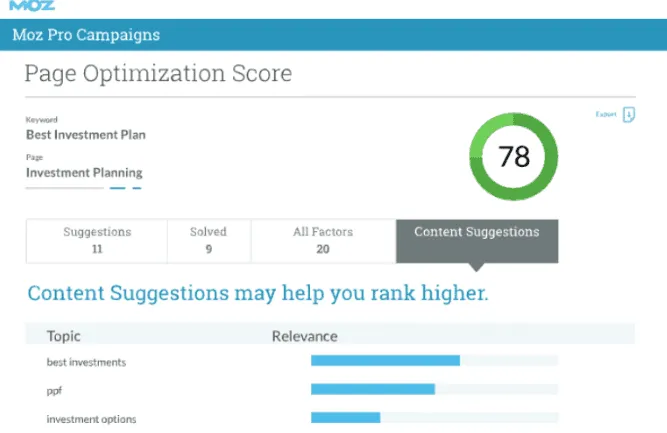
#8. Crawl Errors
Crawl errors refer to issues that occur when search engines attempt to crawl and index your website's pages.
These errors can negatively impact your website's search engine ranking and visibility. By monitoring them, you can identify and fix any issues that may be preventing search engines from properly indexing your website.
You can find this metric in Google Search Console under the "Coverage" tab.

#9. Page Loading Time
Page loading time refers to how long it takes for a webpage to fully load in a user's browser.
This important user experience data can impact your website's search engine ranking and overall performance.
You can use tools like PageSpeed Insights or GTmetrix to analyze your website's loading time and identify ways to improve it.

#10. Indexed Pages
Indexed pages refer to the number of web pages on your site that are included in a search engine's index.
Having more indexed pages can potentially lead to better visibility in search results and may help you bring in more organic traffic.
You can track this metric by using search operators like "site:yourwebsite.com" on Google or checking on Google Search Console, under the "Coverage" tab.

Conclusion
Monitoring these ten SEO metrics can give you valuable insights into your website's performance and help you make informed decisions to improve your search engine ranking.
Remember that these KPIs work together, so it's essential to regularly track and analyze them to get a comprehensive understanding of your website's online visibility.
So, keep an eye on these metrics and use the data to make informed decisions for your overall business strategy.
Related blog posts

How LLMs Change Traditional SEO Metrics
Learn why rankings, CTRs, and impressions fail to measure visibility in AI-powered search — and what SEOs should track instead.
15 July 2025LLM Tracking Explained
Learn what LLM tracking is and why being mentioned in AI-generated answers is becoming a vital layer of visibility in SEO.
13 July 2025The Hidden Flaws in Search Volumes and How to Solve Them
Learn how AI Search Volume delivers reliable search volumes by combining GKP, GSC, and Trends so that you can prioritize the right keywords.
1 July 2025




